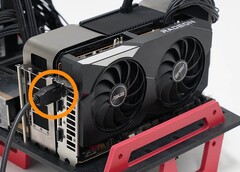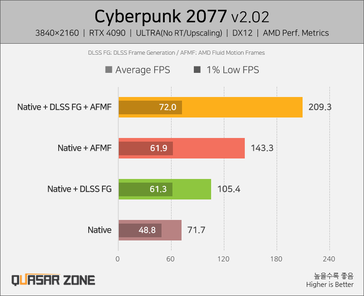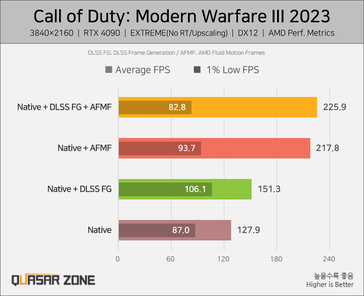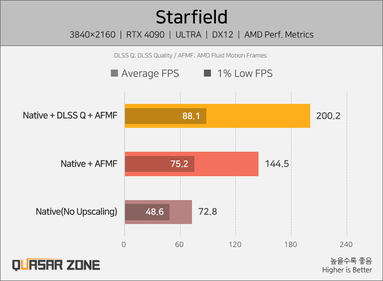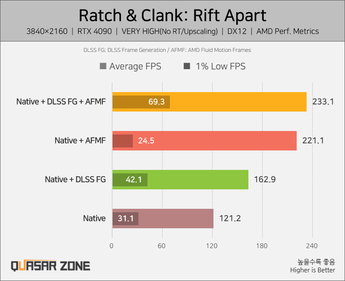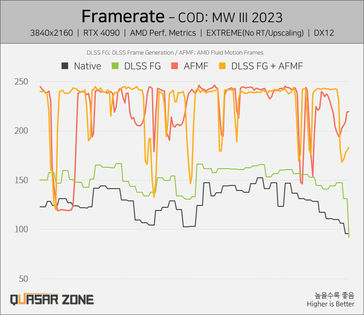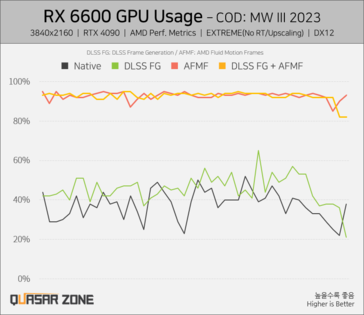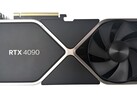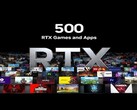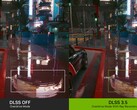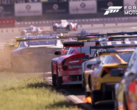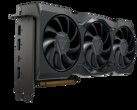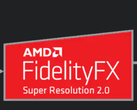AMD’s FidelityFX Super Resolution is presented as an open source alternative to Nvidia’s DLSS, yet FSR has not yet managed to provide performance boosts and image quality on par with Team Green’s solution, so there is no real incentive for developers to provide FSR support on GeForce cards. Even with FSR 3.0 introducing its own version of frame generation called AMD Fluid Motion Frames, Team Red’s performance still lags compared to DLSS Frame Gen. Now, what if we could somehow combine DLSS FG and FSR AFMF? The South Korean team at Quasar Zone actually managed to combine the two technologies leading to impressive performance boosts in demanding games like Cyberpunk 2077, but, since this solution is not officially supported by AMD and Nvidia, and Team Red’s drivers are still in beta, the results are not yet consistent across the board.
Also, the hardware setup required to pull this “unholy union” is essentially taking a page out of the SLI and Crossfire playbook, meaning that we actually need two GPUs. Quasar Zone used a mid-range AMD RX 6600 in conjunction with Nvidia’s RTX 4090. Apparently, the setup does not really work with cards like the RX 6500 XT that integrate only 4 GB VRAM, as the AMD side needs at least 8 GB VRAM plus higher processing power to produce a stable, crash-free experience. Obviously, one would additionally need a motherboard with two X16 PCIe slots plus a PSU that can support the two GPUs.
Other than that, the software setup is not too complicated. The AMD card will be the one connected to the primary monitor, while the Nvidia card will be selected to do the rendering workload. This only works in full screen mode, and the execution chain starts with the Nvidia card rendering the game with DLSS FG enabled, then the output is passed through the AMD card that interpolates the result with AFMF, leading to fps gains of almost 300%.
Besides Cyberpunk 2077, the test suite included games such as CoD Modern Warfare III, Ratchet & Clank: Rift Apart and Starfield. DLSS FG + AFMF clearly produced the most frames in all the games (if not by too much in some cases), but not the same can be said about the 1% lows. In CoD MW III, for instance, the 1% lows were lower than the AFMF or FG tested alone. The guys over at Quasar Zone note that the tests did not even use upscaling, so average fps can further be improved through DLSS and FSR upscalering methods. There is one particular graph that shows how AFMF is not yet effective for scenes with fast camera movement, causing dramatic drops in frames due to the driver dynamically disabling the feature.
It would be interesting to see if the experiment can be taken further by adding the processing power from an Intel or AMD iGPU or even a third Intel GPU, since Team Blue’s XeSS is also said to be open source.




